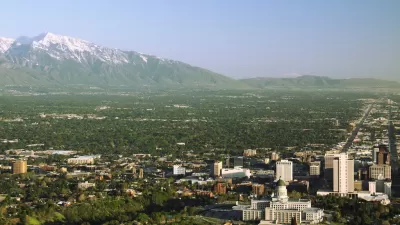Using the movie titled "When Worlds Collide" as a metaphor, environmental attorney Richard Opper describes how environmental regulations can get in their own way to defeat density and infill development—and NIMBYs are not just residents.
In San Diego, a legacy (grandfathered) industrial use fought against a downtown residential project because of fear that the new residents would use air quality regulations to limit the operations of their plant. No one contended that there was a real air quality issue. Rather, the plant owner was concerned that the future residents would use the regulations to harass them. This worry was enough to generate the plant owner's opposition. Ironically, this was the stereotypical case of NIMBY residents taken one level deeper. A NIMBY business motivated by fear of future NIMBY residents. The project was "saved" by substituting a hotel for the residential project. However, the goals of a better environment and better air quality through density and transit friendly development were defeated. Richard Opper, a San Diego environmental attorney specializing in brownfield development, writes about how environmental regulations are often used to defeat their own overriding objectives:
One policy of our Californian laws is designed to encourage infill – perhaps best exemplified by Government Code, section 65041.1 (…”to protect environmental…resources…and promote…efficient development….”) but that policy sometimes runs headlong into another set of our laws – those that regulate air quality. We want people to build near mass transit stations, we even have a name for it – Transit Oriented Development – but in doing so we create potential for conflict between the new residents and the transit (or other urban activity) they came to be near. Our laws on air regulation include a broad and powerful section – not unlike the California Civil Code – regulating “nuisance.” Our Health & Safety Code, section 41700, relates a wide swath of circumstances that can lead to action by our regional air resources boards. “Annoyance” by a number of people gets it going.
For more details, and Richard Opper's acerbic wit, please see source article.
FULL STORY: When Worlds Collide (air quality) – Observations from the Brownfield Trenches

Maui's Vacation Rental Debate Turns Ugly
Verbal attacks, misinformation campaigns and fistfights plague a high-stakes debate to convert thousands of vacation rentals into long-term housing.

Planetizen Federal Action Tracker
A weekly monitor of how Trump’s orders and actions are impacting planners and planning in America.

Chicago’s Ghost Rails
Just beneath the surface of the modern city lie the remnants of its expansive early 20th-century streetcar system.

Bend, Oregon Zoning Reforms Prioritize Small-Scale Housing
The city altered its zoning code to allow multi-family housing and eliminated parking mandates citywide.

Amtrak Cutting Jobs, Funding to High-Speed Rail
The agency plans to cut 10 percent of its workforce and has confirmed it will not fund new high-speed rail projects.

LA Denies Basic Services to Unhoused Residents
The city has repeatedly failed to respond to requests for trash pickup at encampment sites, and eliminated a program that provided mobile showers and toilets.
Urban Design for Planners 1: Software Tools
This six-course series explores essential urban design concepts using open source software and equips planners with the tools they need to participate fully in the urban design process.
Planning for Universal Design
Learn the tools for implementing Universal Design in planning regulations.
planning NEXT
Appalachian Highlands Housing Partners
Mpact (founded as Rail~Volution)
City of Camden Redevelopment Agency
City of Astoria
City of Portland
City of Laramie





























